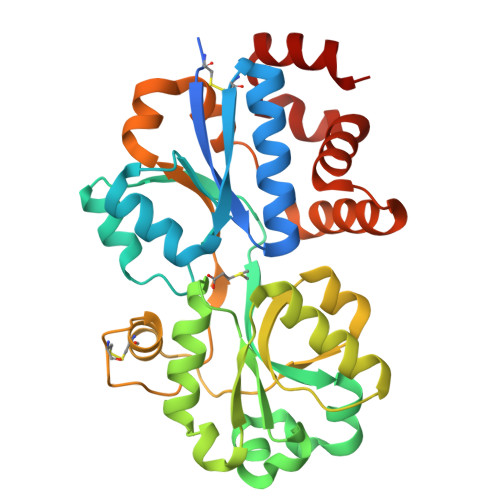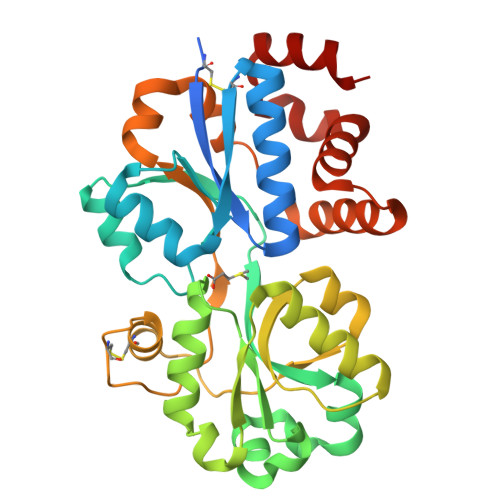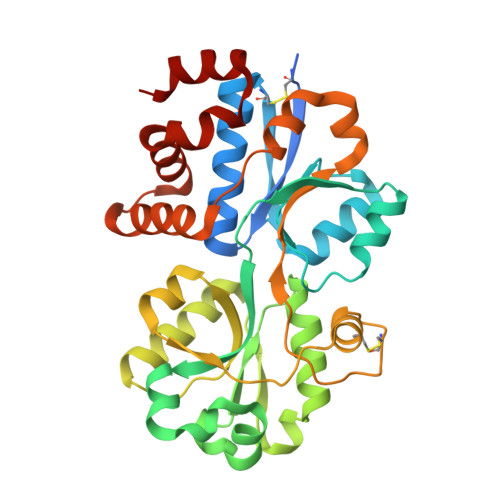Ubiquitous occurrence of a dimethylsulfoniopropionate ABC transporter in abundant marine bacteria.
Li, C.Y., Mausz, M.A., Murphy, A., Zhang, N., Chen, X.L., Wang, S.Y., Gao, C., Aguilo-Ferretjans, M.M., Silvano, E., Lidbury, I.D.E.A., Fu, H.H., Todd, J.D., Chen, Y., Zhang, Y.Z.(2023) ISME J 17: 579-587
- PubMed: 36707613
- DOI: https://doi.org/10.1038/s41396-023-01375-3
- Primary Citation of Related Structures:
7YLE - PubMed Abstract:
Dimethylsulfoniopropionate (DMSP) is a ubiquitous organosulfur compound in marine environments with important functions in both microorganisms and global biogeochemical carbon and sulfur cycling. The SAR11 clade and marine Roseobacter group (MRG) represent two major groups of heterotrophic bacteria in Earth's surface oceans, which can accumulate DMSP to high millimolar intracellular concentrations. However, few studies have investigated how SAR11 and MRG bacteria import DMSP. Here, through comparative genomics analyses, genetic manipulations, and biochemical analyses, we identified an ABC (ATP-binding cassette)-type DMSP-specific transporter, DmpXWV, in Ruegeria pomeroyi DSS-3, a model strain of the MRG. Mutagenesis suggested that DmpXWV is a key transporter responsible for DMSP uptake in strain DSS-3. DmpX, the substrate binding protein of DmpXWV, had high specificity and binding affinity towards DMSP. Furthermore, the DmpX DMSP-binding mechanism was elucidated from structural analysis. DmpX proteins are prevalent in the numerous cosmopolitan marine bacteria outside the SAR11 clade and the MRG, and dmpX transcription was consistently high across Earth's entire global ocean. Therefore, DmpXWV likely enables pelagic marine bacteria to efficiently import DMSP from seawater. This study offers a new understanding of DMSP transport into marine bacteria and provides novel insights into the environmental adaption of marine bacteria.
Organizational Affiliation:
Frontiers Science Center for Deep Ocean Multispheres and Earth System & College of Marine Life Sciences, Ocean University of China, Qingdao, China. Lcy@ouc.edu.cn.



















